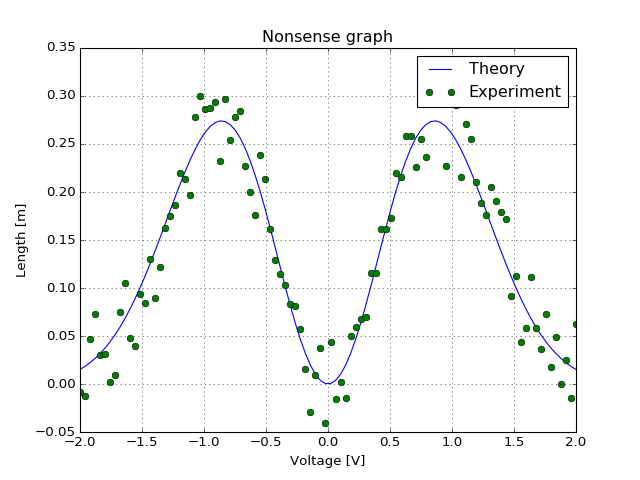6.2. Graphics in Python¶
There is a very complete library in Python that can be used to plot curves. This the matplotlib library. It relies on the numpy library because curves are always plotted using arrays.
6.2.1. The plot command¶
Let us start with an example :
from pylab import *
ion()
x = linspace(0,2*pi)
y = sin(x) + cos(y)**2
plot(x, y)
The pylab modules will import all the function that will make Python suitable for numerical and graphical computation. It will import the matplotlib and numpy modules. To use pylab, one can either import it using the from pylab import * command or using an interactive python shell with the command ipython -pylab.
The plot command takes two parameters : the X and Y axis coordinates (if only one parameter is given, the x axis will be equal to arange(len(Y)))
Optional parameters are used to modify the way the graph is plotted. The two main parameters are the color and the shape. For example, the command plot(x,y, 'k^'), will plot triangle (signe '^') in black ('k' is for black - the 'b' is for blue). Look to the documentation for more details.
6.2.2. Other commands¶
To clear a graph, we use the function clf() (clear figure)
On can add a title (title("Le titre")), labels for axis (xlabel('x-axis') et ylabel). The optional label parameter is used to make a legend on a graph with many plots :
from pylab import *
X = linspace(-2,2, 100)
Y = sin(X)**2*exp(-X**2)
Y_noise = Y + .1*(rand(len(X))-0.5)
plot(X,Y, label=u"Theory")
plot(X,Y_noise,'o', label=u"Experiment")
xlabel(u'Voltage [V]')
ylabel(u'Length [m]')
title("Nonsense graph")
legend()
grid(True)
(Source code, png, hires.png, pdf)

6.2.3. Latex formula¶
In recent version of Matplotlib, it is possible to automatically insert Latex formula in graphs. They will be nicely converted
ylabel(u'Noise [$V/\sqrt{\mathrm{Hz}}$]')
6.2.4. Main graphical commands¶
plot(X,Y)loglog(X,Y),semilogx(X,Y),semilogy(X,Y)clf()to clear the graphxlabel('blabla'),ylabel('blabla'),title('blabla')xlim((x_inf, x_sup)),ylim((y_inf, y_sup))to zoom onto a part of the graphgrid(True)to plot the grid. The commandgrid(True, which='both')will plot a thin grid.figureto open a new figure (a new window). Figures are automatically numbered. You can swith to an existing figure using thefigure(n)command.subplot(nx,ny,m)to make many plots on one figure.imshow(image)to plot a matrix using false color andcolorbar()pour plot color scale.text(x,y,s)plot the textsat thex, yposition. Optional parameters can be used to center correctly the text.savefig(nom_fichier). Save the figure. The file format is determined by the file extension. We advise to usepdffor output that cannot be modified and svg if one want to modify it (using Inkscape- for example).
Screenshots are available on the matplotlib web site and can be used to quickly find the best way to plot a specific graph.